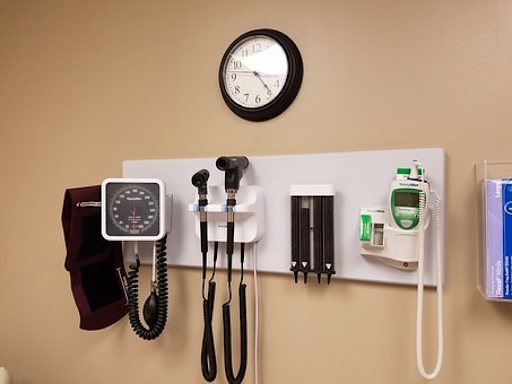As a doctor’s office, you may want to streamline your finances. You can cut down on time and energy by improving the financial aspects of your medical practice and continue providing a high level of customer care. If you’re ready to streamline your doctor’s office finances, there are a few essential tips to follow.
[tmh_article_ads]
Implement a Copay Audit Reporting System
A copay audit reporting system can make it easier to collect copays. It is often an inefficient process that takes time away from scheduling, patient care, and additional aspects of your medical office. It’s important to collect the correct amount of copays to maintain the financial health of the practice. The staff can often forget to charge a patient or misinterpret a rule or regulation.
If you want your doctor’s office to not end up with credit balances, which leads to the need for refunds and patient collections, then you should implement a copay audit reporting system. By using a copay audit EPM report, you will have an accurate and efficient collection. The front desk of your doctor’s office is integral to the financial system of the medical practice. This is why accountability and responsibility must be instituted in your physician’s office.
The NextGen knowledge base can provide you with the ability to learn what is working and what isn’t working in your collection process. Over time, the NextGen knowledge base will save time and money. You can utilize the NextGen Copay Audit EPM Report to find out what is working and what isn’t working in your collection process.
The audit report for copays will give you access to how accurate individual employees are at collecting the correct copays from patients. You can then pinpoint the issues and provide them with opportunities to improve. Also, you have the ability to determine where the process isn’t working and take steps to implement a process that does work through re-training or changing the process.
After implementing a copay audit reporting system, you can ensure your office is collecting the correct amount of copays is essential to maintaining the financial health of your practice.
Use a Billing System with Practice Management
A billing system with practice management can improve workflow and train employees on best practices. It is also capable of offering data sharing across systems, storing insurance providers’ information, and storing patient information with the electronic healthcare record system.
By implementing a billing system through practice management, you can automate common procedures in your doctor’s office and ensure there is no human error. With the system, you can automate processes that include:
- Utilize Flat Rate Monthly Billers
- Payment posting
- Claims management
- Account receivables
- Receive payments on time
- Follow up on claims
- Collect copays
- Collect co-insurance
- Collect deductibles
A billing system with practice management can improve the overall workflow of your office. With the system, you will be able to avoid un-submitted claims, coding errors, under-coding on insurance forms, as well as make sure there is follow up on denied claims.
Use a Concise Collections Process
It’s important to use a concise collections process with a step-by-step approach that clarifies the procedures. Over time, this can improve revenue cycles and will ensure patients are informed of their responsibilities. A concise collection process should involve these steps:
- Clear terms: Inform patients of what is expected of them when paying debts. In new patient paperwork, there should be written text about their obligations to make payments.
- Collect patient information: Have all of their information on file (address, phone number, email, place of work, etc.). Check for updates each time they come for a visit. Require a photo ID at the patient’s first visit. (This is crucial if a bill needs to be sent to collections.)
- Permission to leave messages: Agreement in new-patient paperwork that allows the doctor’s office to leave voicemails.
- Send copay reminders to patients: Let patients know when they check-in for appointments about copay or other payments that are due.
- Verify eligibility: Get insurance card and verify patient eligibility at every visit. This helps to avoid claims being denied. With practice management and electronic health records, you can set this up to automatically verify.
- Collect upfront: Collect co-pays and balances due based on deductibles when the patient checks in for their appointment. The goal should be to collect 100% of copays and deductibles every day. Let patients know via your website, portal, appointment reminder, etc. “No Copay, No Visit” policy, reschedule appointments for those who arrive without their copay (unless the patient is ill).
- Know what each patient owes
- Payment options: Establish what payment options patients have. Be clear about what the payments cover, how they can pay (i.e., credit cards, checks, or cash), as well as payment options that are available to them. Payment options should be documented in writing and signed by the patient. The payment plan should say what will happen if the patient misses a payment. The plan should not be longer than six months.
- Letters and patient statements: Write out templates of letters that you can send out to patients to remind them that a bill is due, overdue, about to be sent to collections. Remove aging buckets (i.e., 0-30 days, 31-60 days, etc.). This will help eliminate patients who wait 30 days to pay. Send reminders weekly. The initial statement should say “DUE NOW,” the second statement should state “PAST DUE ”, next you should call or send a final notice letter and state they have 15 days to pay before you send the balance to collections.
A detailed process that is implemented will help your office run smoothly, collect payments quickly and eliminate lack of communication or misinformation between you and your patients.
Implement Claims Management
An average of 80 percent of medical bills contains errors. Insurance companies are strict about having correct medical billing and coding. If the claim contains an error, it will promptly be rejected. The most common errors include:
- Incorrect patient information: Name, date of birth, insurance ID number, etc.
- Incorrect provider information: Address, name, contact information, etc.
- Incorrect insurance information: Policy number, address, electronic payer ID, etc.
- Duplicate billing: Fail to verify service has already been reported or reimbursed
- Poor documentation: Provider submitted incorrect, illegible, or incomplete documents of procedure or visit. Make it difficult to verify and complete the claim.
- No EOB on a denied claim: Explanation of Benefits wasn’t attached to insurers who still require physical claims.
- Missing denial codes, claim number for reference on a denied claim: Some insurers allow you to submit electronic or online appeals and correct claims. If codes are missing or unclear, it becomes more difficult to fix.
There is often a cycle of submission, rejection, editing, and resubmission, which can take several weeks. This can then result in not receiving payments for months, which is why it is vital that all claims are double-checked to avoid having them be rejected. You want to make sure accurate medical billing and coding information is on all forms the first time they are submitted.
It’s also important to promptly handle denied or rejected claims. Rejected claims aren’t processed yet because they have at least one error. Ultimately, this can prevent the insurance company from paying the bill on time. Denied claims occur when an insurance company has processed the claim, but it’s unplayable because of a violation of the payer-patient contract. Fortunately, rejected claims can be corrected and resubmitted, and denied claims can be appealed before they’re submitted again.
Keep in mind that some insurers allow you to submit electronic or online appeals and correct claims for added convenience. If codes are missing or unclear, it becomes more difficult to fix in the future.
Final Thoughts
These are just a few ways you can streamline the finances in your doctor’s office. By knowing what steps to take, you can save time, money, and improve the productivity of your office.




Share your thoughts